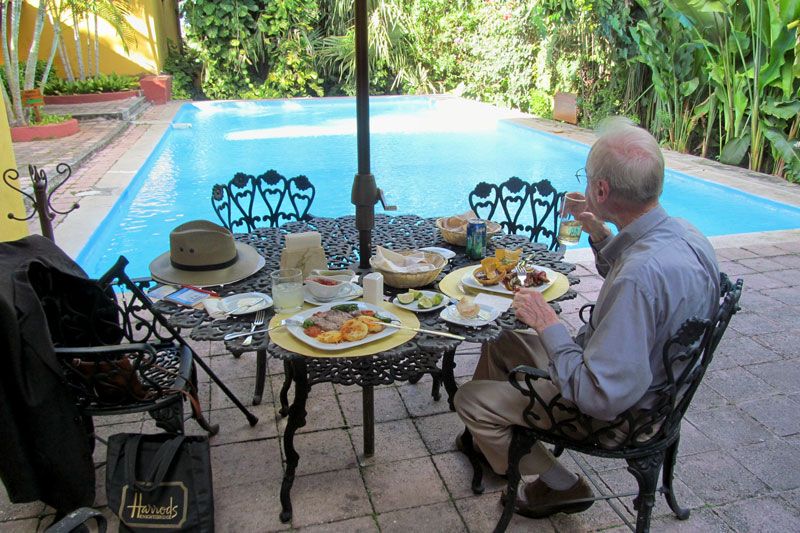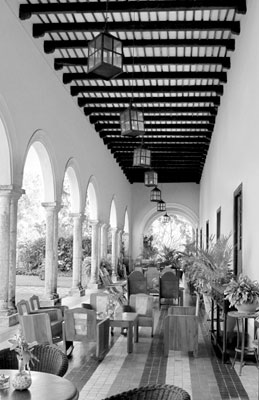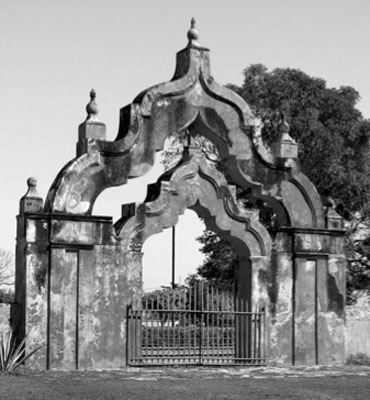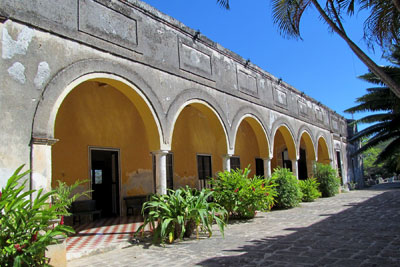When Henequen was king — historic haciendas in Yucatán
This item appears on page 52 of the March 2015 issue.
Henequen reigned as king in what is now the Mexican state of Yucatán, on the Yucatán Peninsula, for much of the 19th century. It was called “green gold” and made plantation owners wealthy, enabling them to own vast estates in the countryside and to build opulent mansions in Mérida, some of which can still be seen along one of the city’s major boulevards, Paseo de Montejo.
The earliest Spanish settlers built haciendas where they farmed and raised cattle, using the local Maya to work their land, often at low or no wages.
In the 19th century, most of the farms and ranches converted to henequen cultivation. Henequen is a type of agave cactus whose fiber, called sisal, is used to produce rope. Until the invention of synthetic fiber and the subsequent abandonment of many of the henequen plantations, sisal rope was one of Yucatán’s main exports.
Henequen was processed right on each owner’s estate, which was practically self-sufficient. Besides the owner’s home, which also often housed the estate’s administrative offices, there was a factory with a distinctive tall chimney, plus warehouses, a chapel, a school, a hospital and company stores.
Henequen plantation
My husband, Paul, and I visited Yaxcopoil (pronounced yash-co-po-EEL), once one of the grandest of the henequen plantations and, at 22,000 acres, also one of the largest.
Yaxcopoil has witnessed three important eras in Yucatán’s history. During the pre-Hispanic period, Maya lived there. Ruins from that period can still be seen on the estate, including six pyramids and a ball court.
In the Spanish-colonial period, Yaxcopoil was a farm and a cattle ranch. The 19th century ushered in henequen cultivation. Very deteriorated by the late 20th century, Yaxcopoil was purchased in 1994, opening as a museum in 2000.
A unique, Moorish-style double arch is the estate’s main entrance, with the main house just beyond. The owners of Yaxcopoil lived in this house in open spacious rooms with high ceilings. There was also an office there to transact estate business.
Much of the house is furnished with the original European furniture that has stood there for more than 100 years. The kitchen looks as if the cook stepped out in 1915 and will be back any minute.
There’s a small chapel, sometimes used nowadays for weddings, and a Maya Room displaying items found on the plantation, most dating from the Maya Classic period, AD 250 to 900.
Most interesting is the workshop, an elegant neo-Classical building with columns, classical statues and a lovely pediment, and the machine room, housing machinery that turned henequen into rope. All this gives an insight into the source of Yucatán’s wealth in the 19th century and why the grandiose mansions on Paseo de Montejo came to be built.
Hacienda Yaxcopoil (phone 52 999 900 1193, www.yaxcopoil.com) is open 8 to 6 Monday to Saturday and 9 to 1 Sunday. The admission charge is 35 pesos, about $2.60 at the time of our visit. Yaxcopoil is located 20 miles south of Mérida on the road to the archaeological site at Uxmal.
New life for old haciendas
Several decades ago a revival began, with many of the old, abandoned henequen plantation haciendas being turned into private homes, conference centers, museums, hotels and restaurants.
We did not stay in any of the hacienda hotels because we rented an elegant house in Mérida from mid-January to mid-February 2014 (July ’14, pg. 63), but we did dine in five of the hacienda hotels. We recommend this highly. It’s an extraordinary opportunity to combine history and gracious ambiance with dining on Yucatecan cuisine. Dining at each of the five haciendas was a highlight of our Yucatán trip.
A handful of haciendas for dining
• The first hacienda hotel we visited was Hacienda Temozon (Carretera Merida-Uxmal, Km. 182, Temozon Sur, Yucatán, Mexico 97825; phone 52 99 99 30 01 91, www.thehaciendas.com).
Once a 17th-century cattle ranch, then a henequen plantation, the hacienda today is a luxury hotel set in extensive gardens 22 miles south of Mérida. There are two huge verandas for dining: one overlooking the front lawn, the other the pool.
The cost of lunch for two, including tip, was $93.76. The highlight of our lunch was cochinita pibil (roast suckling pig).
• Hacienda San José (Carretera Tixkokob-Tekanto, Km. 30, Yucatán, Mexico; phone 52 999 924 1333, www.thehaciendas.com) was also once a cattle ranch, then a sugar plantation and, finally, a producer of henequen. Located 18 miles east of Mérida, it is now a luxury hotel where hammocks swing lazily by the side of a large pool.
We dined on the arcaded veranda beneath a wood-beam ceiling. Lunch for two, including tip, cost $77.30.
The highlight of our lunch was the sampler plate of panuchos (tortillas stuffed with black beans, shredded pork, onion, tomato, lettuce and avocado) and salbutes (crispy tortillas topped with shredded turkey).
• Hacienda San Ildefonso Teya (Carretera Mérida-Cancún, Km. 12.5, Mérida, Yucatán, México; phone 01 999 9 88 08 00, www.haciendateya.com [in Spanish]), eight miles east of Mérida and surrounded by lovely gardens, also began its existence as a cattle ranch at the beginning of the 17th century, switching to henequen in the late 19th century.
It was too warm to sit outside on the open terrace, so Paul and I dined inside the Spanish-colonial-style dining room while a pair of peacocks strutted back and forth in front of our window.
Including tip, the two of us paid $69 for lunch. The highlight? Filete de res a la Yucateca (beef filet with annatto, sour orange, red onion and refried beans).
• Six miles north of Mérida, Hacienda Xcanatún (Calle 20 S/N, Comisaría Xcanatún, Carretera Mérida-Progresso, Km. 12, Mérida, Yucatán, México 97302; phone 52 999 930 2140 or, toll free from the US, 888/883-3633 or, toll free from Canada, 877/838-1445, www.xcanatun.com) was perhaps the most elegant of the hacienda hotels we dined in.
Built in the 1820s, it too served as a cattle ranch before turning to henequen. The Casa de Piedra Restaurant occupies the hacienda’s old machine room, but we chose to dine outside on the terrace overlooking the garden with its lotus ponds.
Our lunch for two, including tip, cost $103.37. The highlight — poc chuc (grilled pork).
• Of the five hacienda hotels we visited, my favorite was Hacienda Misné (Calle 19, No. 172 por 6-B, Fracc. Misné, Mérida, Yucatán, México 97173; phone 52 999 940 7150, www.haciendamisne.com.mx). It also was the closest to the center of Mérida, about a 10- to 15-minute cab ride away, on the outskirts of the city.
We dined outdoors beside the pool surrounded by palm trees and tropical vegetation. Including tip, lunch cost $73.62. The highlight was sopa de lima (chicken broth with shredded chicken, fried tortilla strips and lots of lime juice).
These lunches for two — consisting of predinner drinks or wine plus appetizers, main courses, desserts and coffees — were “pricey,” considering that we were in Yucatán, where dining-out prices were generally moderate.
However, for the combination of ambiance, service and the quality of the food, the lunches were worth every peso.





